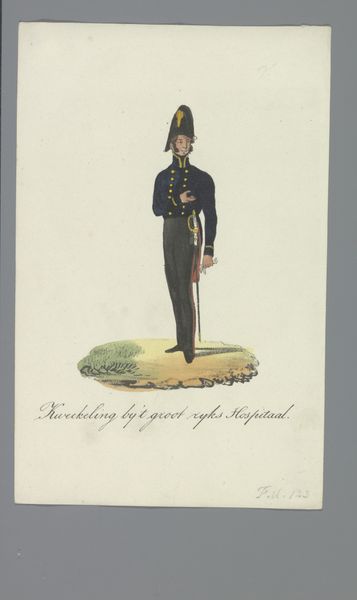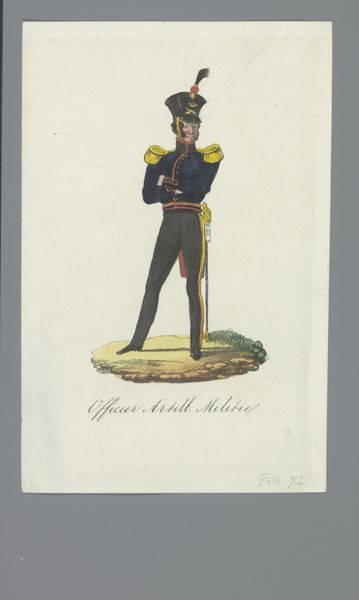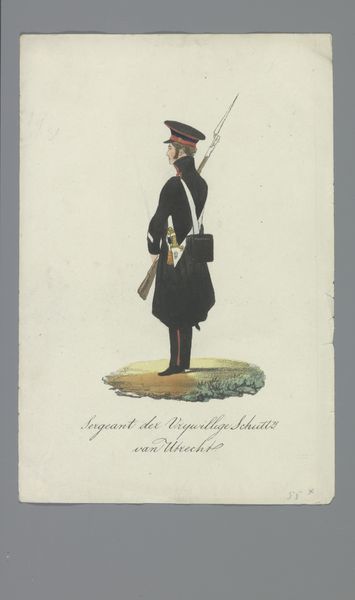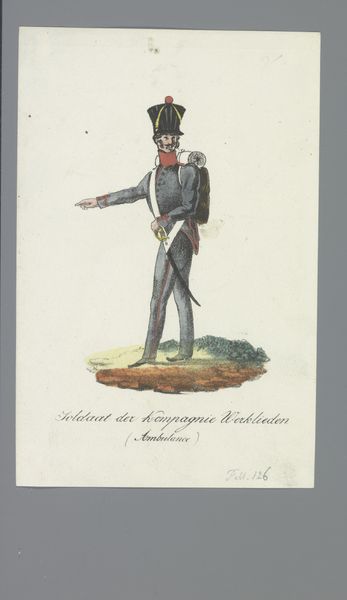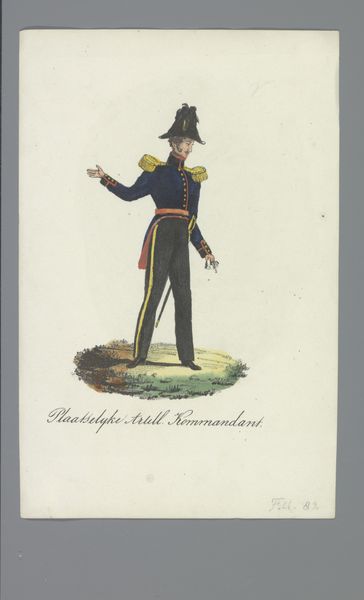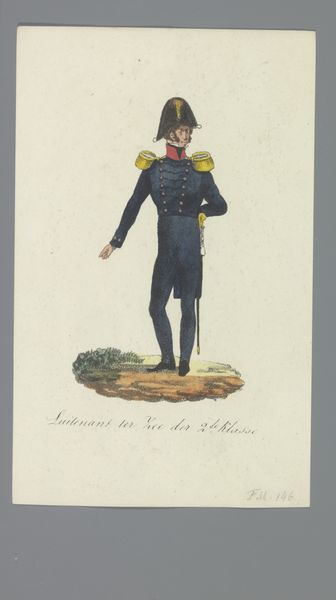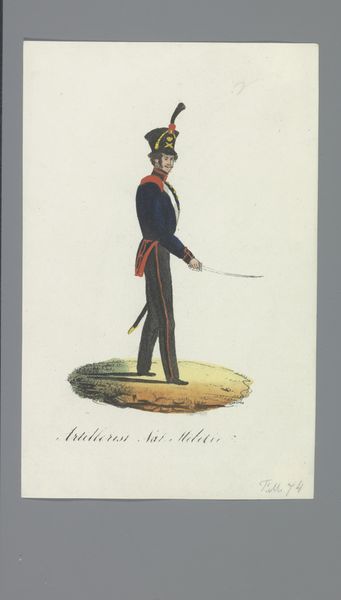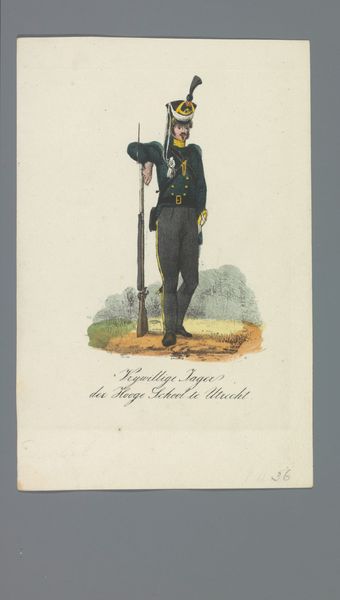
watercolor
#
portrait
#
watercolor
#
romanticism
#
costume
Dimensions: height 170 mm, width 110 mm
Copyright: Rijks Museum: Open Domain
Curator: Let’s examine "Artillerist Veld Bataillon," a watercolor work by Albertus Verhoesen, created sometime between 1835 and 1850, currently held at the Rijksmuseum. What’s your first take? Editor: Austere and strangely lonely. It evokes a sense of stoicism despite the rather theatrical uniform, but something about his posture and averted gaze makes it almost melancholy. Curator: The power resides in the precision of Verhoesen's technique, isn't it? The layered watercolors on paper allow an interesting textural and tonal complexity, indicative of printmaking processes which had recently industrialized to supply military portraiture to all classes of consumers. Think about the availability and mass production implied by its watercolor medium at this moment. Editor: It makes one wonder about the symbology of that uniform— the tall hat, the trim and buttons, and the enormous pack. This gear speaks to something grand, but the turned back speaks to introspection. We are looking, yet kept from truly "seeing" the individual soldier. Is the artist saying something about duty versus individuality? Curator: Well, consider this work, not merely as an object of aesthetic appreciation, but rather as a representation of societal functions of the 19th Century: the function of military organization, uniform production, the labor associated with image production... Editor: But isn't it possible that those visual cues point to a specific understanding of the soldier’s experience? Look at the weight implied by his posture—perhaps an understanding of isolation, maybe of bearing a weight much larger than that pack. Even the red trim pops like angry welts, like psychic wounds! Curator: You bring a fresh perspective! Considering it, through an iconographic lens does expose undercurrents relating to experience... Editor: Right. These images gain resonance when their formal elements are translated. Thinking this way invites discussion on societal attitudes toward conflict, perhaps ideas around valor and even its price, not just uniform production lines. Curator: An exchange about art, material, history, labor... I return again to the idea of the democratization of image production, it allowed ordinary citizens broader access... It is important not to lose track of labor relations and class, it enriches the picture beyond symbolism. Editor: Exactly! Perhaps, thinking about production versus feeling completes the interpretation in an interesting way.
Comments
No comments
Be the first to comment and join the conversation on the ultimate creative platform.

